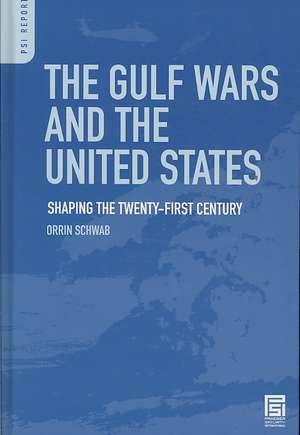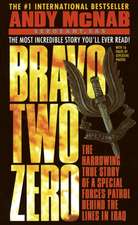The Gulf Wars and the United States: Shaping the Twenty-First Century: PSI Reports
Autor Orrin Schwaben Limba Engleză Hardback – 29 noi 2008 – vârsta până la 17 ani
Din seria PSI Reports
- 35%
 Preț: 414.13 lei
Preț: 414.13 lei - 28%
 Preț: 412.88 lei
Preț: 412.88 lei - 28%
 Preț: 361.86 lei
Preț: 361.86 lei - 27%
 Preț: 376.91 lei
Preț: 376.91 lei - 28%
 Preț: 437.31 lei
Preț: 437.31 lei - 24%
 Preț: 412.88 lei
Preț: 412.88 lei - 28%
 Preț: 412.61 lei
Preț: 412.61 lei - 27%
 Preț: 376.58 lei
Preț: 376.58 lei - 27%
 Preț: 376.43 lei
Preț: 376.43 lei - 28%
 Preț: 438.17 lei
Preț: 438.17 lei - 27%
 Preț: 378.09 lei
Preț: 378.09 lei - 28%
 Preț: 437.75 lei
Preț: 437.75 lei - 24%
 Preț: 459.91 lei
Preț: 459.91 lei - 28%
 Preț: 412.79 lei
Preț: 412.79 lei - 24%
 Preț: 459.51 lei
Preț: 459.51 lei - 28%
 Preț: 435.55 lei
Preț: 435.55 lei - 28%
 Preț: 375.66 lei
Preț: 375.66 lei - 24%
 Preț: 462.45 lei
Preț: 462.45 lei - 27%
 Preț: 360.03 lei
Preț: 360.03 lei - 14%
 Preț: 333.24 lei
Preț: 333.24 lei - 28%
 Preț: 437.40 lei
Preț: 437.40 lei - 27%
 Preț: 370.30 lei
Preț: 370.30 lei - 24%
 Preț: 462.45 lei
Preț: 462.45 lei - 24%
 Preț: 463.72 lei
Preț: 463.72 lei - 27%
 Preț: 379.88 lei
Preț: 379.88 lei - 18%
 Preț: 322.02 lei
Preț: 322.02 lei - 18%
 Preț: 335.62 lei
Preț: 335.62 lei - 14%
 Preț: 337.61 lei
Preț: 337.61 lei - 27%
 Preț: 339.36 lei
Preț: 339.36 lei - 26%
 Preț: 348.26 lei
Preț: 348.26 lei
Preț: 459.91 lei
Preț vechi: 636.95 lei
-28% Nou
Puncte Express: 690
Preț estimativ în valută:
88.02€ • 91.55$ • 72.66£
88.02€ • 91.55$ • 72.66£
Carte tipărită la comandă
Livrare economică 15-29 aprilie
Preluare comenzi: 021 569.72.76
Specificații
ISBN-13: 9780275997540
ISBN-10: 0275997545
Pagini: 180
Dimensiuni: 156 x 235 x 20 mm
Greutate: 0.41 kg
Editura: Bloomsbury Publishing
Colecția Praeger
Seria PSI Reports
Locul publicării:New York, United States
ISBN-10: 0275997545
Pagini: 180
Dimensiuni: 156 x 235 x 20 mm
Greutate: 0.41 kg
Editura: Bloomsbury Publishing
Colecția Praeger
Seria PSI Reports
Locul publicării:New York, United States
Notă biografică
Orrin Schwab is a visiting scholar at the University of Chicago. He is the author of Clash of Cultures: Civil Military Relations During the Vietnam War (PSI, 2006) and Defending the Free World: John F. Kennedy, Lyndon Johnson, and the Vietnam War, 1961-1965 (Praeger, 1998). He has taught at Purdue University Calumet and the University of Chicago.
Cuprins
Chapter One The Gulf Wars and American Foreign RelationsChapter Two The Persian Gulf and the Late Cold WarChapter Three The First Gulf WarChapter Four The Interregnum: Clinton and the GulfChapter Five The Third Act: George W. Bush and the GulfChapter Six The Second Gulf WarChapter Seven The liberal technocratic order in the Persian Gulf
Recenzii
This is an important and timely contribution to the contemporary debate around the US involvement in the Gulf Warsof the late 20th and early 21st centuries. Schwab (visiting, Univ. of Chicago) provides an in-depth analysis of theAmerican technocratic state driven by an ideology, or script, that guides the decision-making process. . . . Highly recommended. All readership levels.









